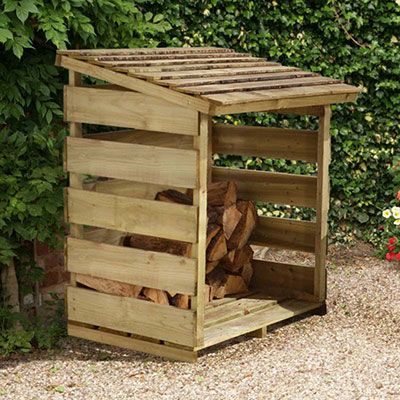
Buying a log store in summer? Madness you cry! Not so, and here’s why.
If, like me, you normally wait until the nights are closing in before looking to buy wood and some form of log storage, you’ll probably be left with logs that cost the earth and a fire that hisses.
Unfortunately, most of us wait for the first cold snap of autumn before buying a load of seasoned logs and the laws of supply and demand will dictate that we’re going to pay a premium: too many people chasing a limited resource. Availability of logs last year was particularly bad, probably due to gas prices and concern over gas supplies (though one of my supplier’s entire stock of logs was set on fire which didn’t help!). At one point, I had to source from several suppliers just to get a decent load.
I’ve also found that during such peak demand, a supplier’s description that their logs are ‘seasoned’ is also open to interpretation – ranging from a bit moist to downright sodden! If the moisture content of the logs you buy is not down to around 20% to 25% a lot of the heat will be wasted evaporating the water in the wood. Bad for you and bad for the environment as logs that don’t burn well will generate more smoke and nasty particulates. If you’ve ever witnessed your neighbours pointing at your chimney stack and tutting, you’ll know what I mean...
Whether you have an open fire or a wood-burning stove, the key to a crackling flame at the maximum heat and lowest possible cost to you and the environment is to buy your logs early and make sure they dry during the best possible time – the summer months. If you have the option of getting hardwood such as beech or ash it’s worth considering as it burns more slowly than softwood though it is more expensive and I’ve found it takes longer to season.
Seasoning your logs
So you’ve bought your logs, now how do you season them?
The best way to season logs is to use a purpose built log store that will keep the logs off the damp ground and protect them from the elements (yes, it rains in the UK in summer) but at the same time allows air to flow around the logs to dry them.
Drying starts from the outside of a log and moves towards the centre so you need to keep as much of the surface area of each log exposed to the air flow. You can certainly help here by stacking the logs to leave air gaps between them. This is quite easy to do with quarter-sawn logs which is how they’re typically supplied. Bear in mind that good log stacking is like dry-stone walling: it takes time, it’s back-breaking but it is total absorbing and enjoyable once you get into it. It’s also a great way for the kids to earn their pocket money!
Start to season your logs early and when they’re ready (look out for tell-tale cracks in the wood), you’re ready to impress the family with your fire-making skills.
